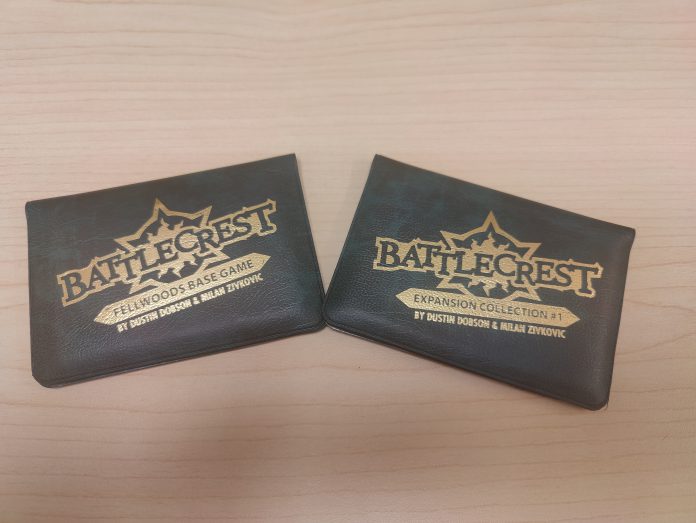As board gaming enters what seems like a decline on the golden years of huge mega releases, I find myself turning more and more to things I can actually get to the table and also enjoy playing. In a lot of cases, this has moved me away from what the market is pushing: huge narrative sprawling titles, crunchy, tiring mechanics, and hours long gameplay. Sometimes, I love these types of games. Increasingly, I find myself being annoyed by them.
My most enjoyable gaming experiences lately come in small boxes, play in under an hour, and provide light, challenging experiences or puzzles. Enter Buttonshy games, a publisher that’s made a name for themselves off of wallet sized, pocketable games that play quickly and require little external components save table space.
I’d heard of Buttonshy before, but not gotten a chance to play any of their titles. When they offered to send us a copy of Battlecrest, it piqued my interest greatly because of what the game promises: a 1-2 player (solo with an expansion, as a caveat) tabletop skirmish game that plays quickly and provides the types of punchy, fun choices one desires from skirmish games.
Battlecrest is a skirmish game for 2 people, developed by Dustin Dobson and Milan Zivkovic, retailing for 12 dollars for the base game and an additional 12 for the Imperator expansion. I had to admit that my initial approach was trepidatious, mostly because it seemed like far too much for a game that is actually smaller than my wallet to provide, and in most cases, Battlecrest managed to dissuade my initial fears, although not without a few hitches.
Is That a Skirmish in Your Pocket or are You Just Happy to See Me?
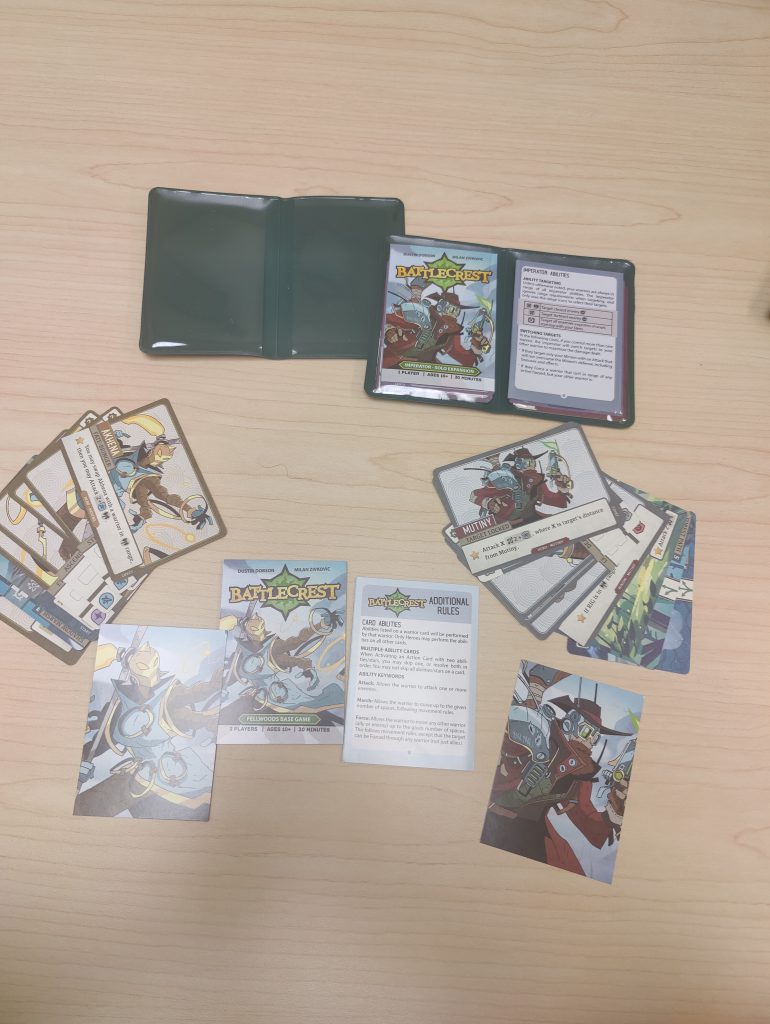
Battlecrest: Fellwoods is the base game, and contained within the small, leather-like package is a set of 2 characters, terrain cards, health trackers, two player aids, and two rules pamphlets. I was actually shocked by how much is actually in the little envelope, because I wasn’t sure exactly how to approach the game from the outset. There are no markers, tokens, dice, or other items provided (or required), and everything is handled in fewer cards than a standard 52 card playing deck.
The base game comes with two characters: Akhena, a woman warrior who has devastating melee combat abilities, and Mutiny, a sort of techpirate with a minion buddy, Rig, who can take advantage of range and the extra body to snatch up a victory. What surprised me is that the two characters are distinct enough to be enjoyable to swap around, but also fit nicely into the sort of skirmish/fighting game type of “I prefer to play this sort of character” archetypes. Akhena’s more straightforward melee focus doesn’t mean that she has little strategy, and Mutiny’s focus on range doesn’t mean he’s weak, either, meaning that multiple plays can provide interesting choices and different outcomes; I never felt like either character was stronger than the other.
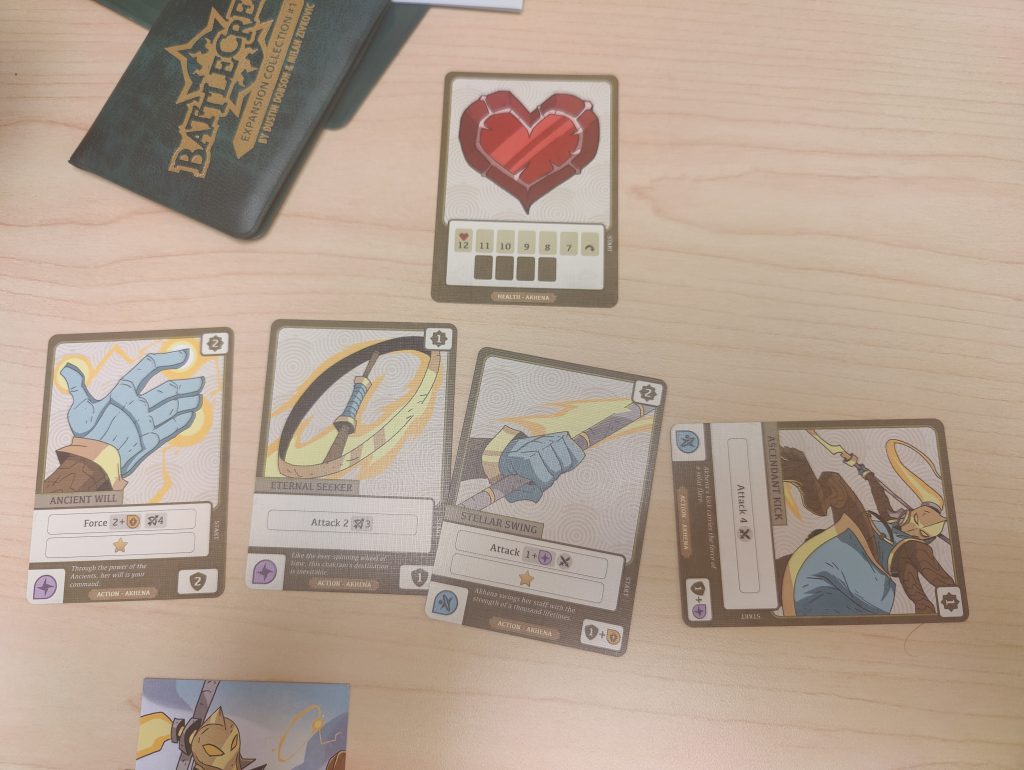
Much of this comes from the way the battles play out. Characters move using values provided on their cards, and then ‘tap’ cards to take attacks or use them to bolster their defenses. However, characters have limited cards, and when they become tapped, players are required to flip them over, providing a new effect but also delaying when they can use the front side again. For example, Akhena’s devestating Ascendant Kick does a whopping 4 damage, but to use it again requires a player to Refocus the card, use the opposite side, and Refocus again; you aren’t going to be able to just constantly batter your opponent with devastating attacks.
Also, as cards become exhausted, the distance you can move also lowers. Initially charging across the battlefield might leave you in a bad spot after you’ve exhausted a card to attack and possibly defending, meaning that tactical forethought and planning is rewarded here. Movement around the various landmarks and using their shortcuts makes positioning an important part of the puzzle, making a game using cards somehow more dynamic than most skirmish board games I’ve played, and also removes a lot of the chance from bad die rolls and other various modifiers: your skill in Battlecrest comes from making correct choices and using what you have, not from hurling dice or lucky card flops.
Crowding Out and Growing Up

Perhaps my biggest negative experience with Battlecrest, however, is the actual space required. While the game itself fits very neatly into the wallet sized package, the actual table space required for the game is shockingly large. The battlespace is essentially an invisible grid that the cards help set up as a boundary, and at times almost made me wish for a playmat. The 6×6 grid area is divided by the 6 landmark cards that come in the game. Each hero starts by one, and the other 4 are diagonally spread through the middle of the table. Heroes kind of ‘swing’ around these spaces, moving through them utilizing various shortcuts they may have, but I found at times that it was easy to misjudge how much space one would need. Of course, compared to a game such as Magic the Gathering or YuGioh!, Battlecrest is a modest tablehog, but I was still thrown for a loop when I first set it up. Perhaps the wallet sized package is a little deceiving in that regard, but it made me realize that Battlecrest isn’t quite as utilitarian and ‘pick up and play anywhere’ as I initially thought.
My second gripe is the rulebooks. I get that going for size and form are important, but the rule pamphlets left a little to be desired. The game flows very easily once you get it down, but I did find myself looking at a video of how to play to get the flow down in my head properly. Once you do learn how to play Battlecrest, though, the game is a blast, and as long as you have the space, the game promises a great time. That time can even be further extended by the expansion, which provides 2 extra heroes, as well as a solo mechanic, packing a ton of game into two very small packages.
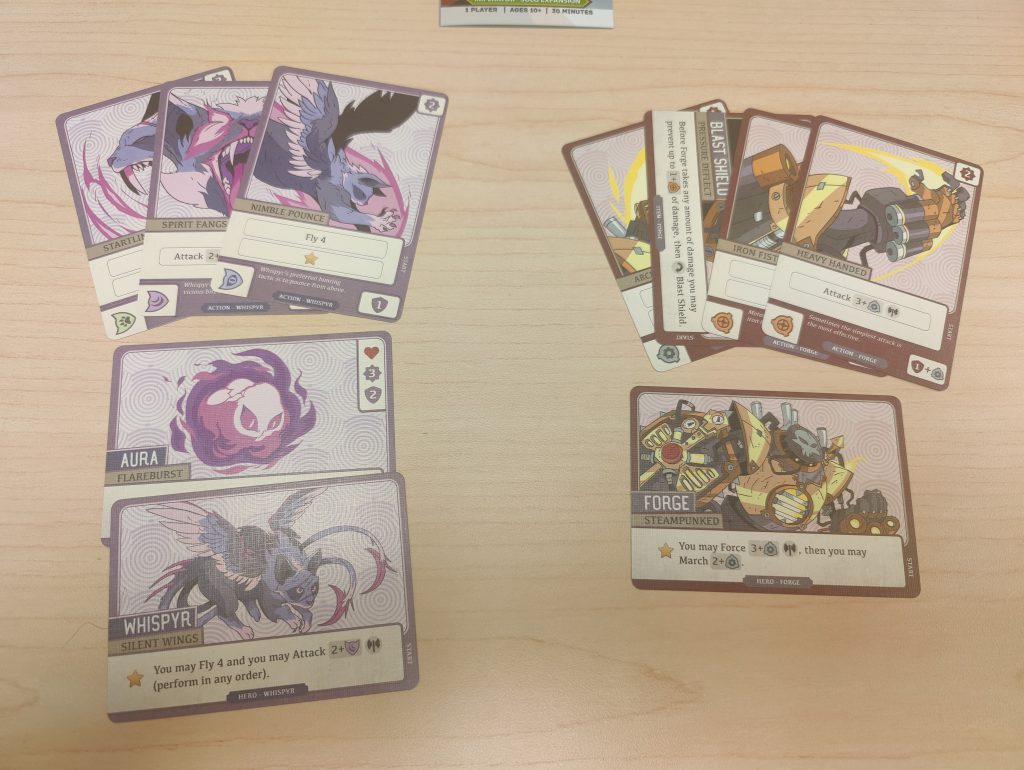
This small packaging coupled with the nebulous table space, is where some of the Buttonshy aesthetic kind of confused me. A small box game version of this, with perhaps an unfolding playmat and 4 heroes in the box, would make just as great an investment and also perhaps have made some of those weird foibles stick out to me as much.
The expansion, Imperator, introduces more heroes, another solo and hero/minion duo to play as. That alone made the expansion feel great, and part of me feels that Battlecrest is a better game with the expansion as an investment than just the base game alone, now that I know it exists. The solo mode in the expansion is reason enough to get it right out, and I wish they simply came together as a single purchase.
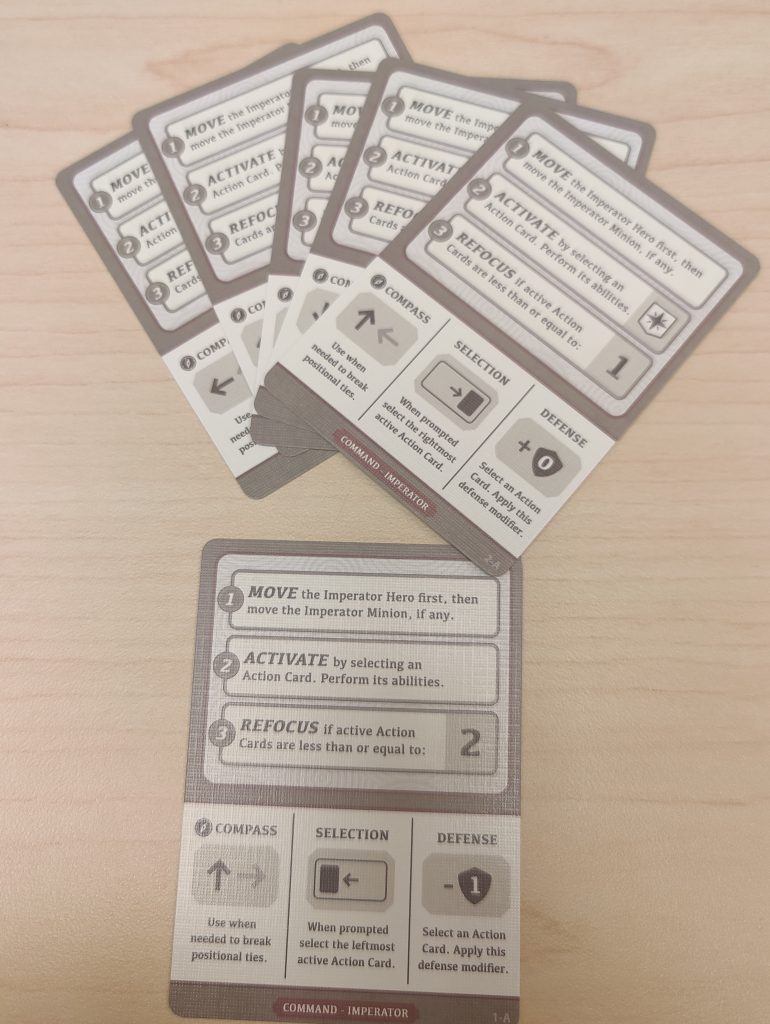
The solo mode comes with a deck of cards that determine how the enemy moves and reacts to you. These cards are universal, and can be used with any of the heroes, either from the base set or the expansion, meaning that you can have a lot of great variety in your games regardless of who you are playing as. It also makes the game possible to have various set-ups and outcomes you may not expect, and the solo variant ‘bot’ is quite difficult.
I will say that my biggest issue is that the main solo rules allow the enemy to attack from anywhere, regardless of range, which I did not like, and ignored. Playing solo as if I were playing against a human, bound by the rules of range and engagement, made the game much more fun and interesting from a solo point of view. It does make the solo game take longer, which is likely why the original is the way it is, but there was something frustrating about having the AI opponent kick me in the head from across the board, so, your mileage may vary.
Digestible Battles For High Tea
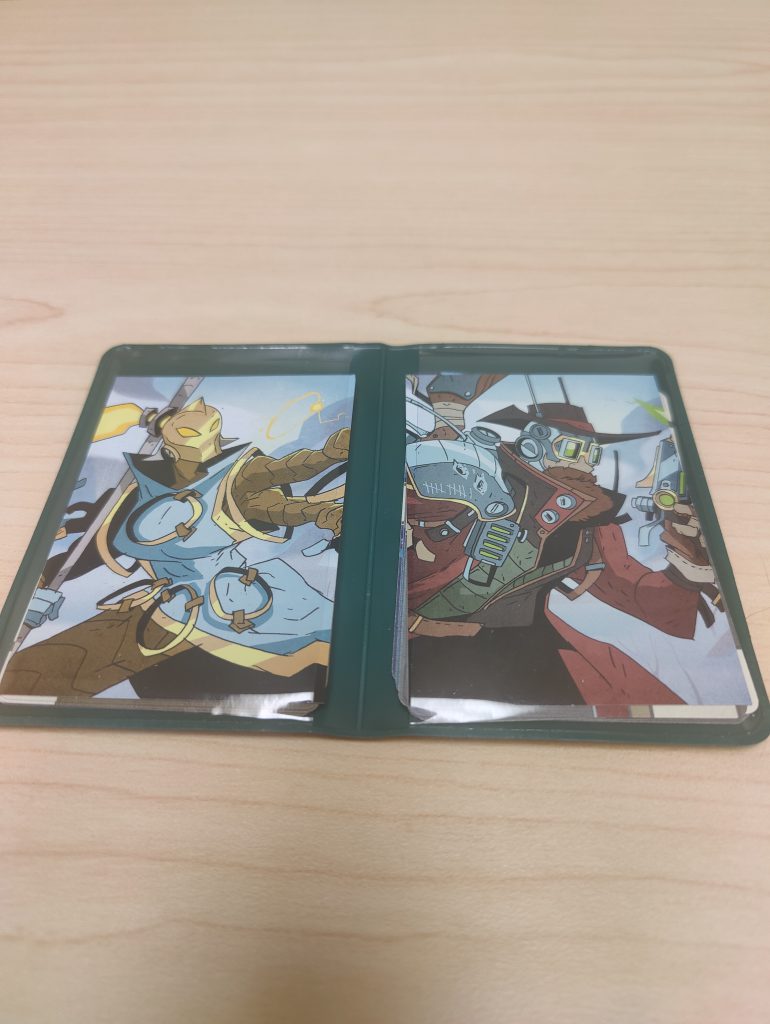
My biggest recommendation for Battlecrest is that, once you get past the initial shock at the size the ‘small’ game wants from you, the game itself is one of the most fun skirmish based games I’ve played. The use of space, the tactical movement and terrain usages (including things like traps, bonuses, and shortcuts) felt like the game had managed to boil down skirmish game to a distinct essence, and extract everything fun without everything that isn’t. Battlecrest games take 20 minutes or less and can honestly be played with a friend (or solo!) on a lunch break, a short get together, or just whenever. Despite the fact that the game is small and fairly quick, I never quite felt like it was “filler”, either. I could see playing quite a few rounds of Battlecrest as a fulfilling evening between a partner and I. I don’t know if I’d say that the solo mode has the same weight and serves better as a fun diversion or game to play when alone and lacking your main collection to pull from.
I’m quite impressed by my first meeting with a Buttonshy game, and highly recommend Battlecrest. Especially for readers interested in miniature wargames, fighting games and skirmish games, this might be one of my favorite recommendations as a game to pick up. If you do, just make sure you don’t get confused by the ‘take me anywhere!’ nature of the game’s size: you still need a good sized table or flat floor to play on, and you are absolutely going to want to get the Imperator expansion. With those reservations in mind, though, Battlecrest is an easy recommend and a blast to play that’s worth adding to your collection, and a great introduction to the types of experiences that Buttonshy is trying to provide.
